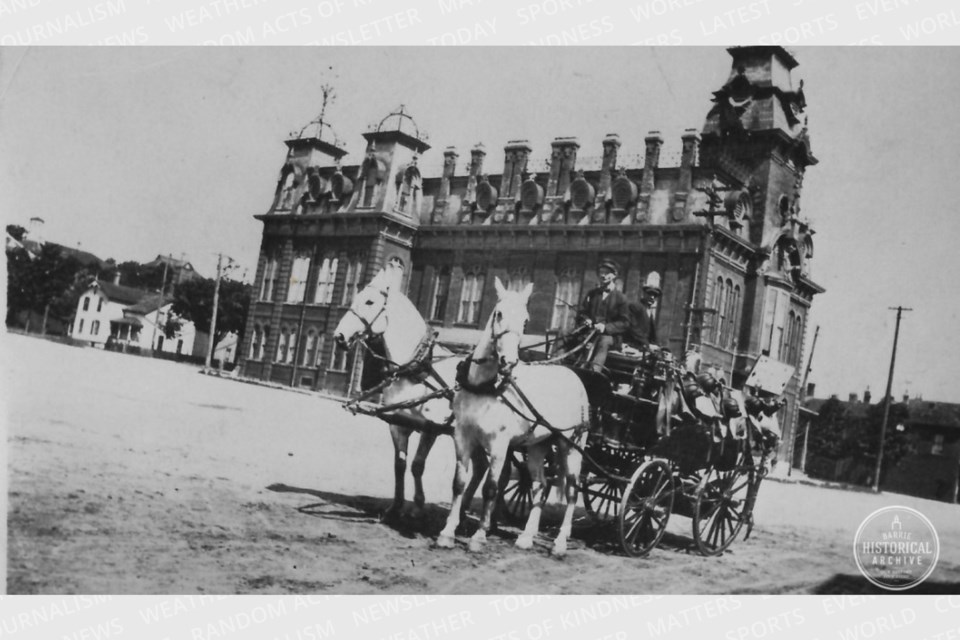Softening of the brain. That’s what they called it. This rather undignified catch-all term was used by late Victorian-era physicians when describing what we would refer to today as dementia.
However, what happened to Martin Moore in 1903 was not solely caused by his rapidly declining mental faculties. Far from it.
Moore was one of Barrie’s earliest tradesmen. His wood-frame, roughcast saddlery shop near Five Points appears among the rare photos of Barrie’s pre-fire days. In the 1870s, one blaze after another removed all the original shops, Moore’s included, and caused them to be rebuilt in brick.
Martin Moore came from Ireland in the 1850s, and arrived in Barrie before 1863. He was not the first saddle and harness maker in the village. William Root had him bested by at least a decade in that line of work.
The fire of June 1871 shocked the community of Barrie. It was the first, but certainly not last, loss of an entire business block in the emerging commercial district. It began in a stable near the railway tracks and soon jumped to some dwelling houses attached to the centre of the block. From there, the fire burned in both directions.
The Moore shop, valued at $1,200, was reported as a total loss. Moore worked for the remainder of that year in a temporary venue, O’Brien’s grain store on Collier Street.
After this setback had passed, business success followed. Martin Moore relocated several times and spent time in the Boys’ Block, and on Bayfield Street just north of the Wellington Hotel. He owned a Dunlop Street building, which was referred to as Moore’s Brick Block.
His personal losses were another thing altogether. By 1893, Moore was widowed and had buried three of his five children, all in young adulthood, after tuberculosis came calling. There was little that 19th-century doctors could do as no cure yet existed. A vaccine would come, but not until 1921.
Nearly non-existent as well was some kind of social safety net. The Barrie Jail served as a place of last resort as one Northern Advance reporter noted after one of his periodical visits in 1897. He called it “that combination of prison, lunatic asylum, hospital and house of refuge commonly called the castle or the county jail.”
Finally, in 1898, the House of Refuge for Simcoe County was opened in Beeton, at the cost of $40,000. It was a large, sprawling, three-storey building on 100 acres intended for farming to supply the home and occupy the more able residents.
This was not a good time to be elderly, alone and unwell.
As Martin Moore approached his 80th birthday, he began to exhibit some signs of dementia. The body of the hard-working man was still strong and able, but the mind was not as it once was.
Fortunately, or unfortunately, the onset of Mr. Moore’s affliction coincided with the opening of the House of Refuge and he was one of the first residents admitted to that new institution.
There were problems though and the Northern Advance of June 27, 1901 hinted at these.
“Martin Moore, of Barrie, again took his residence in the House of Refuge on Tuesday evening. Martin has been there many times before, but he does not like to stop for too long in one place.”
Each week, the Barrie Historical Archive provides BarrieToday readers with a glimpse of the city’s past. This unique column features photos and stories from years gone by and is sure to appeal to the historian in each of us.



